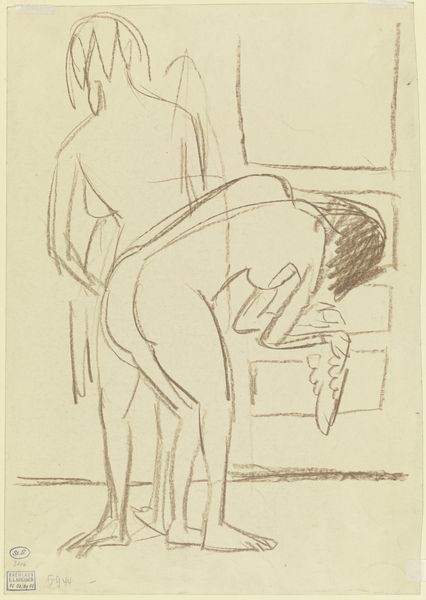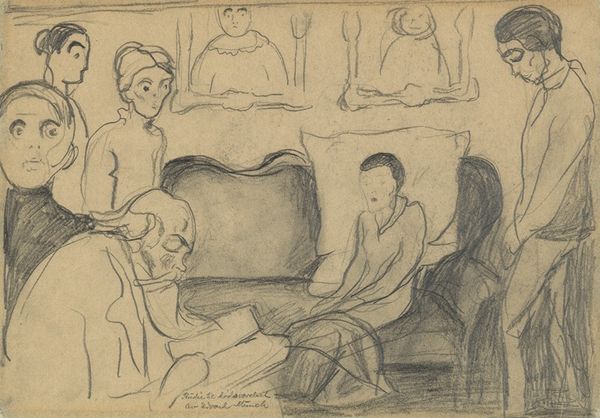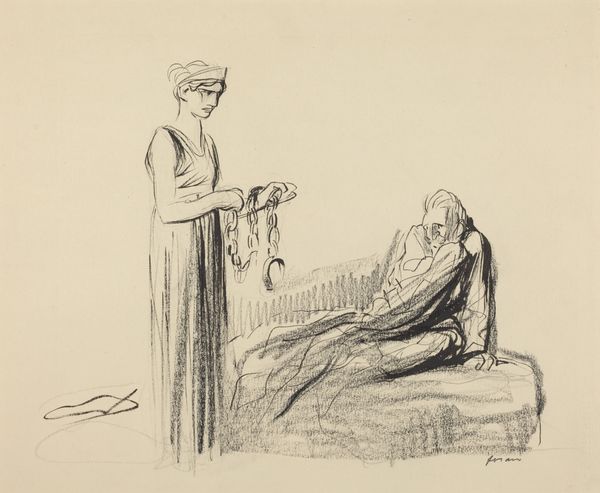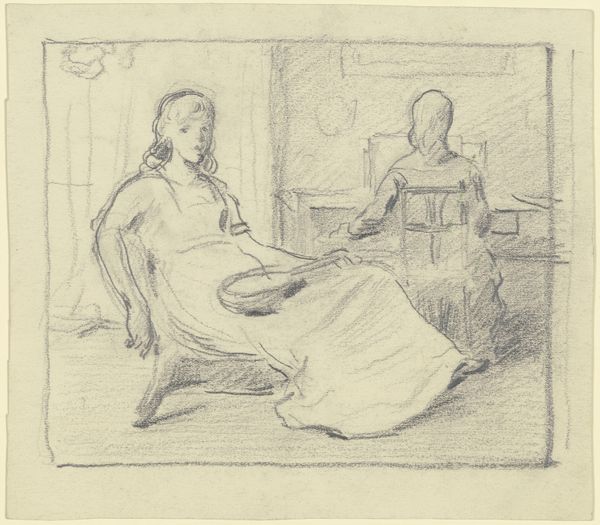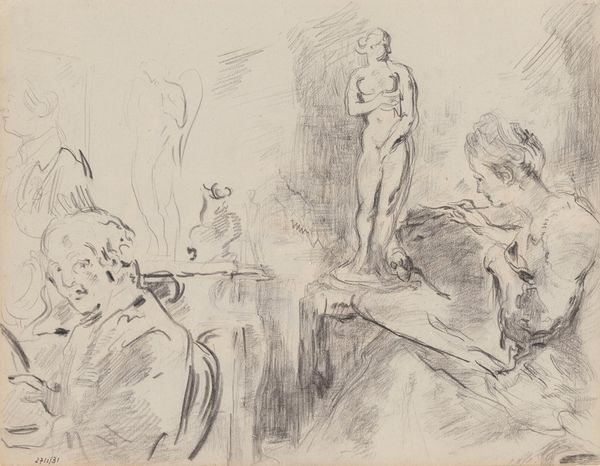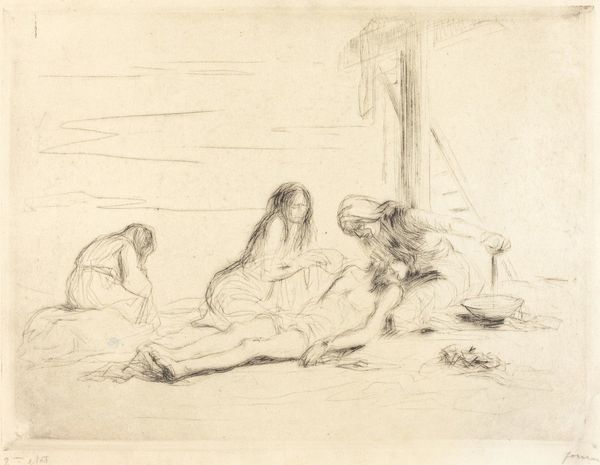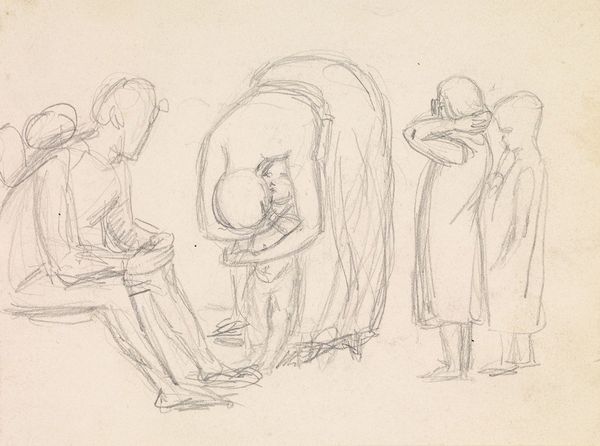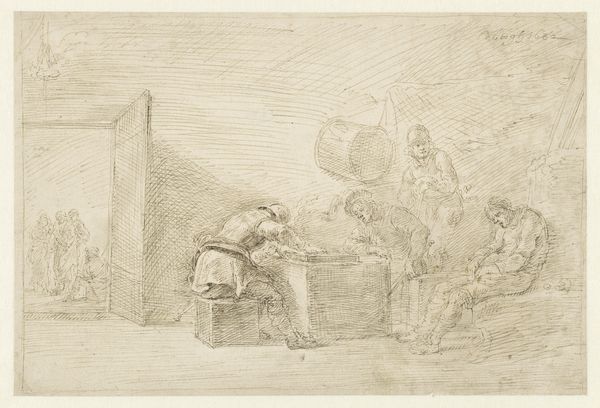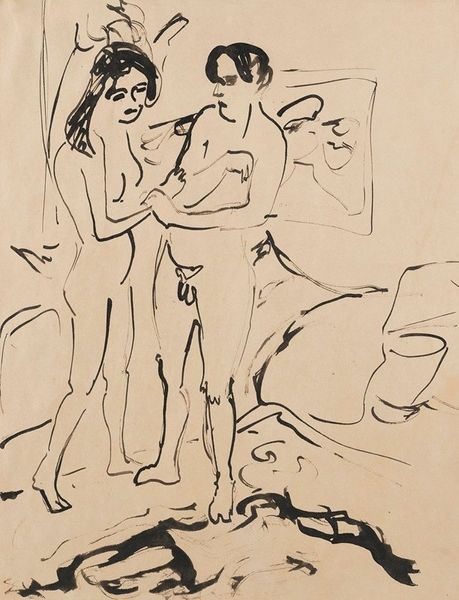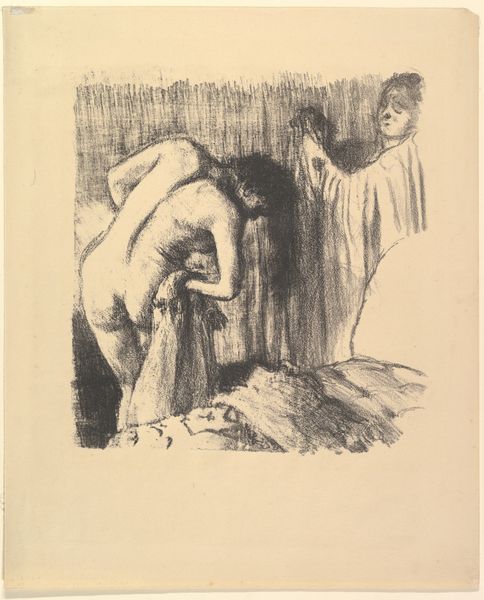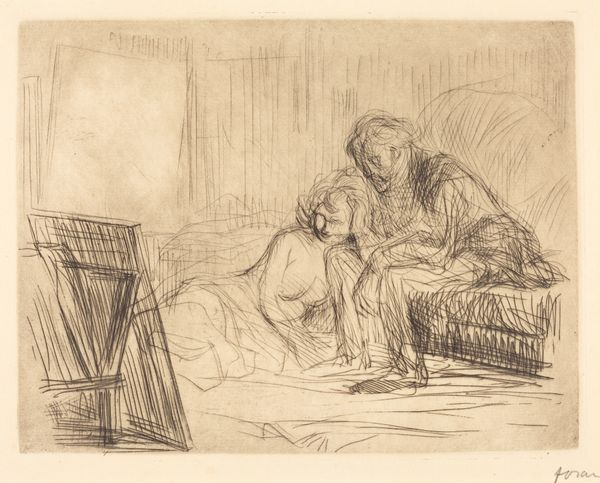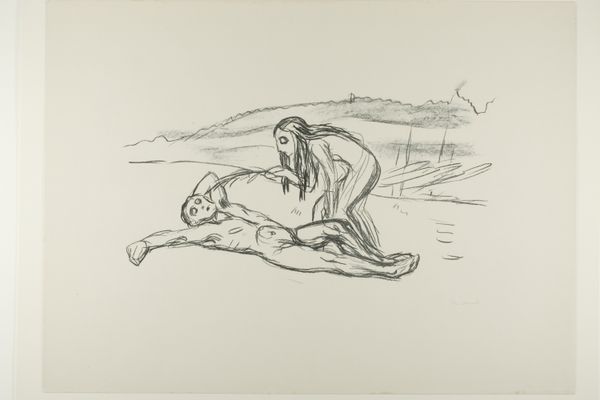
drawing, pencil
#
portrait
#
drawing
#
landscape
#
figuration
#
pencil
#
expressionism
#
portrait drawing
Dimensions: overall: 31.9 x 47.8 cm (12 9/16 x 18 13/16 in.)
Copyright: National Gallery of Art: CC0 1.0
Editor: Jean-Louis Forain's pencil drawing, "Discharged from Military Service," believed to be from between 1914 and 1919, really evokes a somber mood. The quick, expressive lines give a sense of unease and uncertainty. How do you interpret this work within the historical context of its creation? Curator: This piece speaks volumes about the socio-political landscape following World War I. Forain, known for his social commentary, likely created this in response to the trauma and disillusionment experienced by soldiers returning home. Notice how the discharged soldier seems lost, almost vulnerable, while the figure behind him offers little in the way of obvious emotional solace. The very act of shedding the uniform represents a dramatic shift in identity, a reentry into a society forever changed by war. Editor: So the work challenges a purely heroic view of war, then? Curator: Precisely. Consider the intended audience and where something like this would be displayed. By portraying a soldier in such a state of undress and visible mental discomfort, Forain challenged prevailing narratives. Is he celebrating a return, or stripping the figure bare? Is he instead, laying bare society's expectations against the soldier's interior turmoil? The pencil drawing and sketchy, unrefined marks suggest instability, perhaps even mirroring the instability felt within French society at the time. Editor: It’s interesting how the rawness of the medium contributes to that sense of instability. It feels more like an immediate, unfiltered response than a carefully constructed statement. Curator: Exactly! The drawing itself becomes a form of political expression. The rapid sketch, combined with the social subject matter and historical background makes Forain’s criticism difficult to ignore. Is there anything else you see within that socio-political lens? Editor: Thinking about it now, I see how this artwork uses a moment of quiet intimacy to reflect larger societal shifts after a huge political event, the First World War. Thanks so much for clarifying the cultural nuances of this poignant sketch. Curator: And thank you for helping shed light on those visual cues and nuances. Considering both makes it so much more meaningful.
Comments
No comments
Be the first to comment and join the conversation on the ultimate creative platform.

